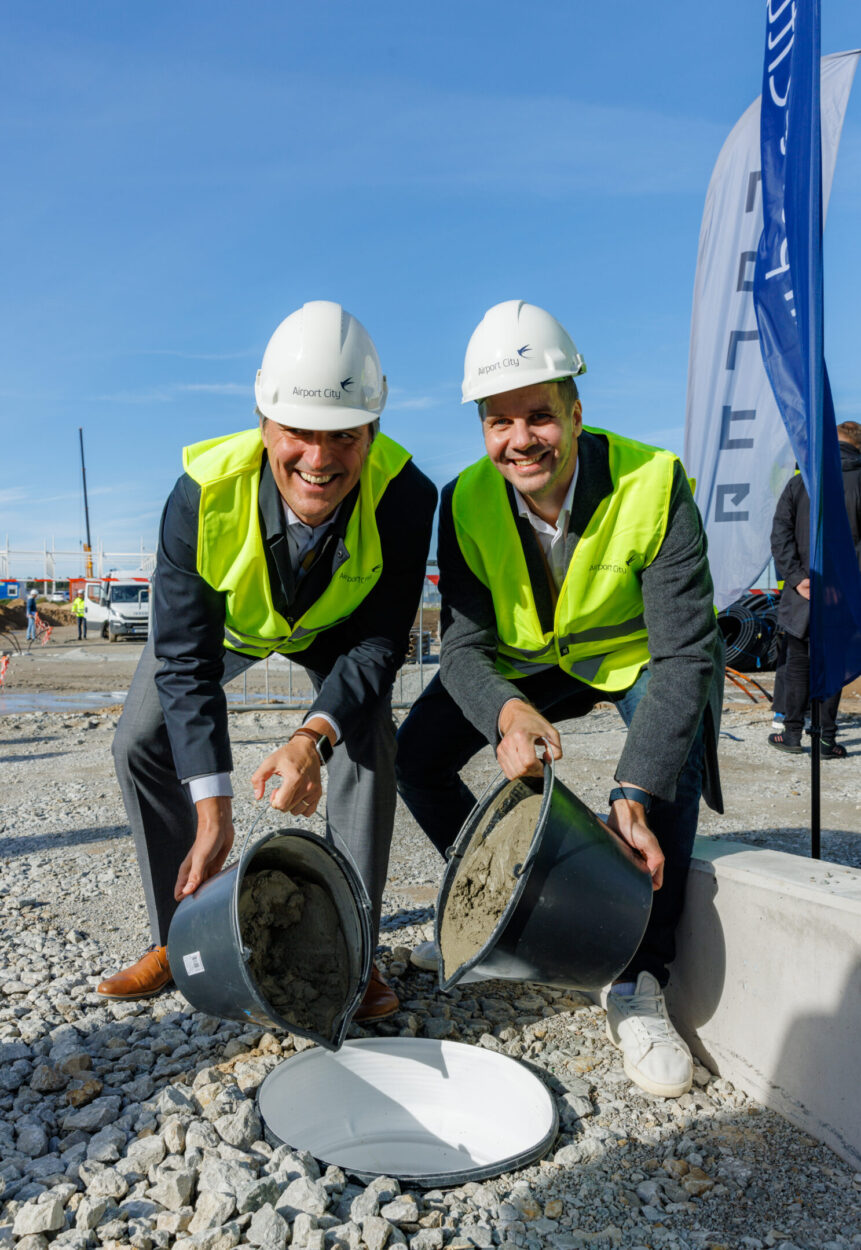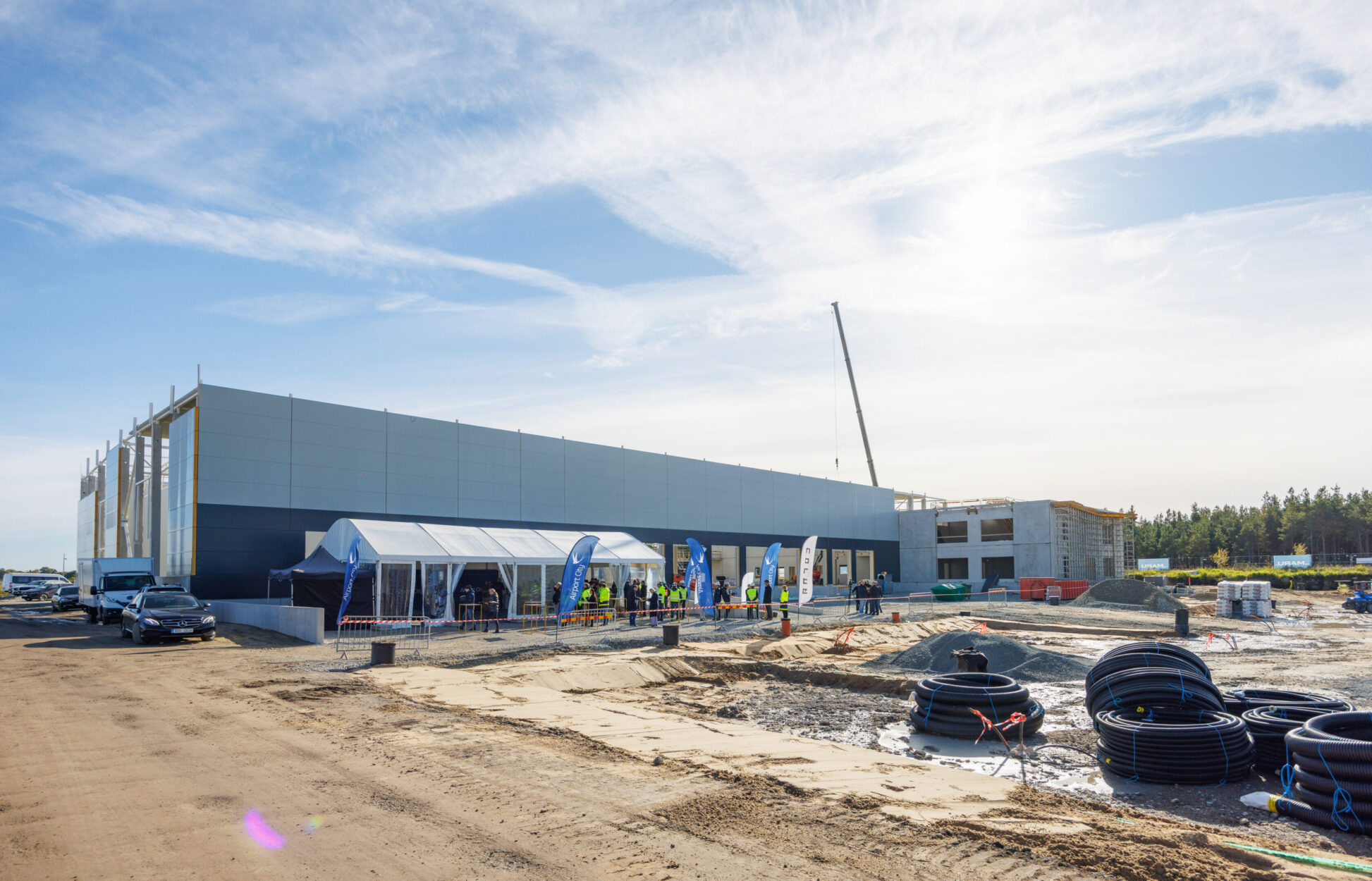Cornerstone laid on first cargo terminal on south area of Airport City
Tuesday 1 October saw the cornerstone laid on the first cargo terminal on the southern side of the Airport City business complex at Tallinn Airport. The facility will house a 5250 m2 cargo terminal for FedEx Express Estonia which will be completed in July 2025.
Airport City will create new and improved opportunities for businesses that need to be close to the airport, its runway and aircraft.
“The airport is not just a gateway to Estonia, but is one of the cornerstones of the functioning of the economy and economic growth. Good air connections are vital for our country considering Estonia’s location. But besides passengers, goods also move. The development of airport infrastructure will boost the growth of aviation-related business. Today’s laying of the cornerstone is the next step in the development of Tallinn Airport,” said the Minister of Infrastructure Vladimir Svet.
The cargo terminal will comprise 1450 m2 of office space and 3800 m2 of warehouse space. There will also be loading bays for 57 vehicles, and 123 parking spaces for employees of and visitors to the facility.
“This investment represents another step in strengthening FedEx’s commitment to Central and Eastern Europe, aimed at meeting the growing demand for logistics, e-commerce, and local manufacturing. With its new solutions and strategic location, we will be able to offer our customers even better services, supporting their international aspirations and operational needs,” said Mariusz Mik, Vice President of Ground Operations FedEx Europe. “FedEx is the world’s largest express transportation company, providing fast and reliable delivery to more than 220 countries and territories. Thanks to our unique global air and ground network, which Tallinn is part of, we can connect people with opportunities.”
“Airport City is designed to create a functional and well-functioning business environment and modern infrastructure for companies linked to aviation, thereby supporting the development of the industry,” explained Airport City CEO Teet Raudsep. “I’m delighted to welcome FedEx Express as our first tenant of the cargo terminals. We’re creating a modern working environment for them that will guarantee a fast and professional freight transport service for their customers. I’d like to thank the construction company involved, too: Maru Ehitus. They’ve been the perfect partners since we signed the contract, and I’m sure that will be the case all the way through to the completion of the facility.”
The FedEx Express Estonia cargo terminal was designed by Norte OÜ, with engineering by Enn Rajasaar and Priit Ehala. It is being built by Maru Ehitus AS.
“Our mission is to build the sort of tomorrow we ourselves want to live in,” said Margo Dengo, a member of the management board of Maru Ehitus. “For us, that’s based on good, lasting relationships, innovation and sustainable solutions. In that sense I’d first and foremost like to thank our client, Airport City, for trust and being so great to work with. They don’t just want something built: they’re looking at the whole life cycle and footprint of the buildings. It uses a number of interesting and innovative solutions which, in a good way, are really pushing us as engineers.”
Riivo Tuvike, the chairman of the management board of Tallinn Airport, says the airport’s mission is to connect Estonia to the world. “In the current economic climate, ways of boosting revenue beyond passenger transport are becoming more and more important,” he admitted. “By increasing the airport’s revenue, we create opportunities to invest in the development of infrastructure, new technological solutions and passenger comfort. Most airports in Europe are no longer focusing on passenger transport alone to increase their revenue base. An increasing share of turnover is coming from the sale of goods and services to passengers, as well as to other partners around the airport. The proximity of the runway and the availability of related services represents great added value for transport and logistics companies, aircraft maintenance and service providers, hotels, warehousing services and industrial companies.”
Airport City is Tallinn Airport’s business park and gateway to international business. It covers all of the commercial space offered by the airport and the new developments in areas close to the runway. What makes Airport City special is the synergy between aviation and business, its unique location and its international profile.
Airport City comprises four areas around Tallinn Airport’s runway on land covering approximately 120 hectares, enabling the development of aviation-related real estate. The areas have been divided up based on their location relative to the runway, i.e. to the north, south, east or west of it.



